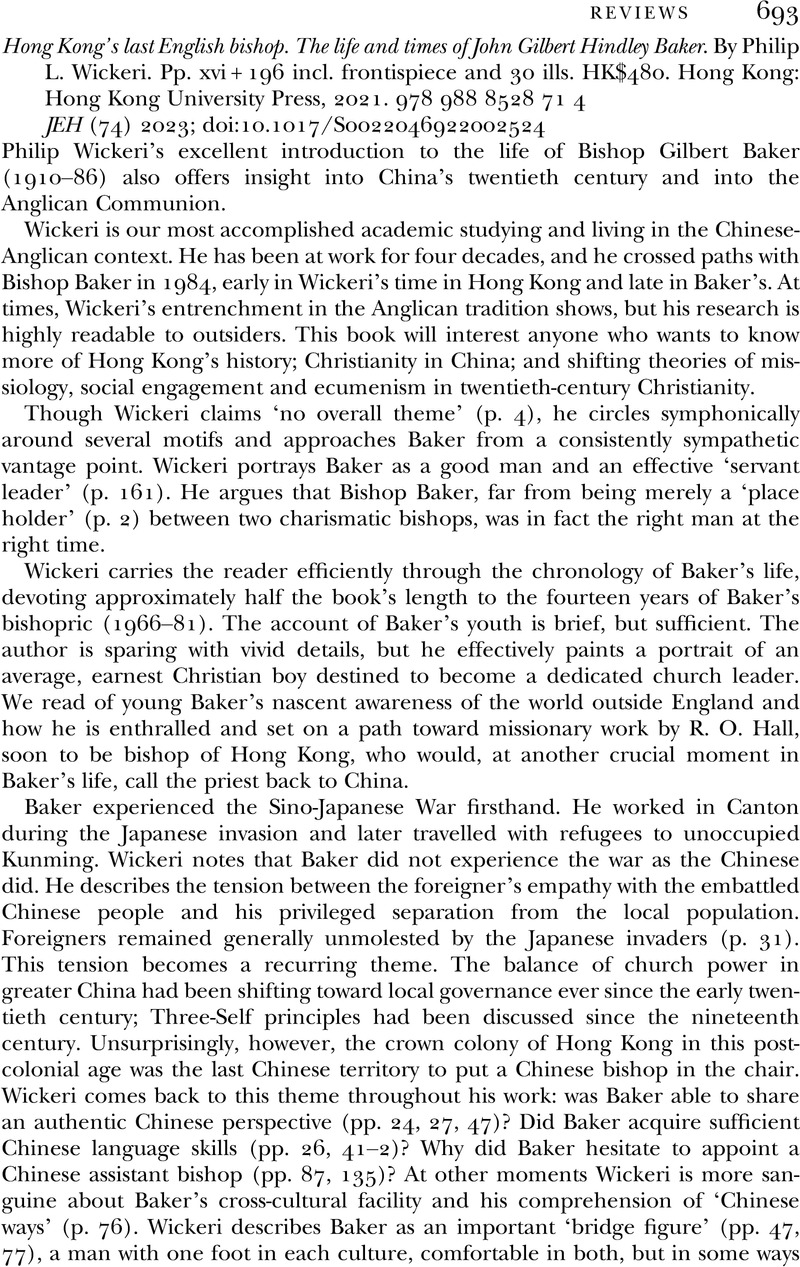No CrossRef data available.
Article contents
Hong Kong's last English bishop. The life and times of John Gilbert Hindley Baker. By Philip L. Wickeri. Pp. xvi + 196 incl. frontispiece and 30 ills. HK$480. Hong Kong: Hong Kong University Press, 2021. 978 988 8528 71 4
Review products
Hong Kong's last English bishop. The life and times of John Gilbert Hindley Baker. By Philip L. Wickeri. Pp. xvi + 196 incl. frontispiece and 30 ills. HK$480. Hong Kong: Hong Kong University Press, 2021. 978 988 8528 71 4
Published online by Cambridge University Press: 05 July 2023
Abstract
An abstract is not available for this content so a preview has been provided. Please use the Get access link above for information on how to access this content.

- Type
- Reviews
- Information
- Copyright
- Copyright © Cambridge University Press 2023



